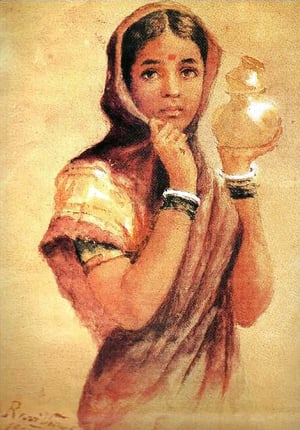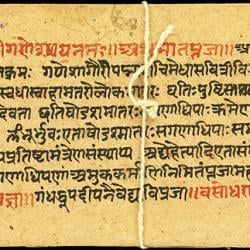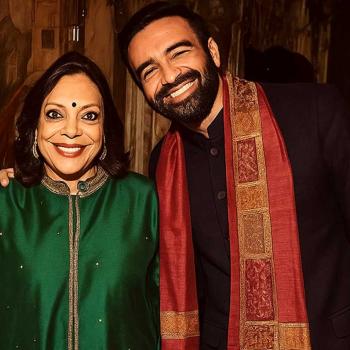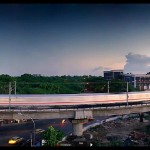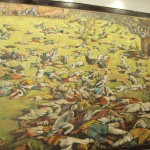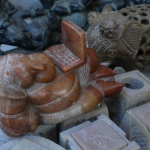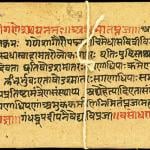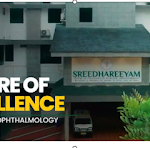 This is an interesting article of how New Delhi changed over the years! I have seen the New Delhi of my childhood transform into a baffling mass of concrete and people over the last 37 years! We used to live on Gurudwara Road in Karol Bagh. The main Gurudwara Road now is so jam-packed that you cannot even walk on it.. and the streets criss-crossing it are so full of business and mess that you can’t walk even there! But I learnt to play cricket in these streets and often on Mondays when the Karol Bagh bazaar is closed (it still is) – we could play cricket on the main road for some time too!! But those were the days before Maruti can come.. before the commercialization had happened. Soon everything changed!
This is an interesting article of how New Delhi changed over the years! I have seen the New Delhi of my childhood transform into a baffling mass of concrete and people over the last 37 years! We used to live on Gurudwara Road in Karol Bagh. The main Gurudwara Road now is so jam-packed that you cannot even walk on it.. and the streets criss-crossing it are so full of business and mess that you can’t walk even there! But I learnt to play cricket in these streets and often on Mondays when the Karol Bagh bazaar is closed (it still is) – we could play cricket on the main road for some time too!! But those were the days before Maruti can come.. before the commercialization had happened. Soon everything changed!
In a little over 5 years the entire area was so difficult to live in!! You couldnt breathe properly because of the smoke from the traffic! It took almost 10 years for the message to reach the South Block and the secretariat!! Thats when the push for the CNG started. What a change it brought!! Then came Metro. Eeshwaran, in my estimation, did a miracle! Knowing Delhi the way it is and its people who are so full of some political connection.. it is but amazing that he could pull such a thing off!!
Still a lot needs to be done .. .. by many standards, Delhi is probably the best equipped of all cities in India.. but that is not much of a consolation!
Had things been different in the past 75 years, erstwhile Reading Road, now Mandir Marg, would still have been the street for modern education in New Delhi. But that has not been so, and some of the aged schools on the road stand testimony to that fact.
Take the Harcourt Butler Senior Secondary School for instance. This two-storey building adjacent to Birla Temple has nothing to inform an onlooker that it was one of the first schools to have come up in New Delhi. Established in 1917 as a seat for modern education, today it runs on a humble government aid. “About 99 per cent of our students belong to lower socio-economic strata,” says vice-principal S.K. Dardi. The Delhi government awarded the school a Heritage prize but it did little to bring back its past glory.
Raisina Bengali School on the same road is not very different. In 1925, behind the Wellingdon hospital (Ram Manohar Lohia hospital for the uninitiated), a few bureaucrats, who had just moved in from Calcutta, gathered their children and started a small school. “The aim was that their children could learn the Bengali culture,” says vice-principal of Raisina, P.K. Banerjee. It shifted to its present building in the 1930s. Now even with over 3,000 students, the school cannot boast being a frontrunner.
It is said that the shifting of the Capital from Calcutta was a boost to English education in New Delhi. “Many Bengali bureaucrats and other officials from Calcutta brought with them the experience of quality education in English,” says Shanta Kashyap, principal, Lady Irwin Senior Secondary School.
Lady Irwin School was the first school for girls. Satish Ranjan Das, a barrister and member of the viceroy’s executive committee, established the school in 1927. “The school has had a predominantly Bengali management. Even now, defence minister Pranab Mukherjee is the president of the governing body,” she says. The school’s present building on erstwhile Canning road came up in 1938.
Christian missionaries are lauded by historians for having introduced English education in India. In New Delhi, it was Convent of Jesus and Mary – the girls’ school that was founded in 1919 and moved near the Gol Dakkhana in 1926 -that spearheaded English education here. But Modern School on Barakhamba road prides itself on initiating quality education as the first non-governmental and non-missionary school in New Delhi.
Old-timers say that after Mahatma Gandhi called for boycotting all things British, the schools and colleges run by British managements suffered huge dropouts. That formed the basis for Modern School’s inception. Writer Khushwant Singh, an alumnus, once wrote that founder Raghubir Singh was inspired by the idea of a school that would match the best schools by missionaries. Barring Modern School, most old schools in New Delhi have long succumbed to the competition from big, newer private schools.





